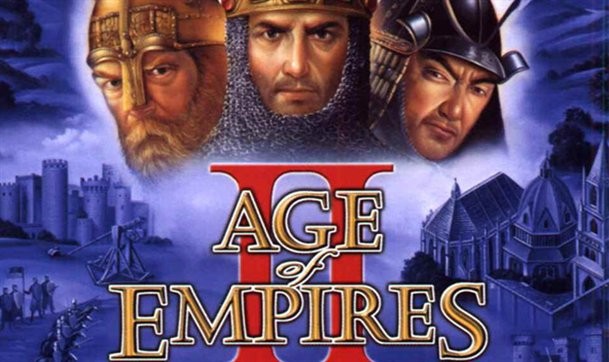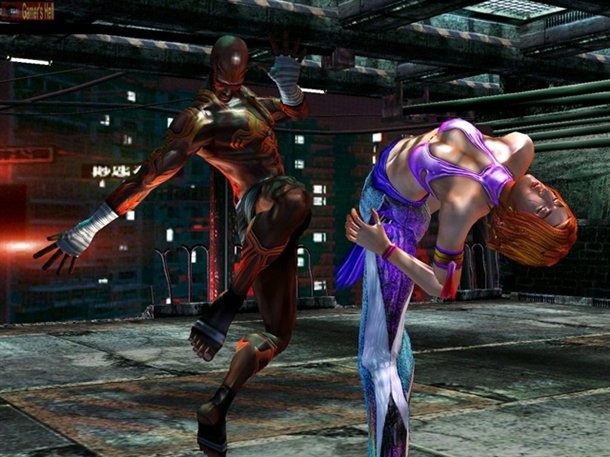Our extra-large special edition is here. Subscribe today and receive the 25% longer issue at no extra cost!
Thinking Globally: We Learn From The Mistakes Of Others
What happens when a developer doesn’t take into consideration the global market during the early stages of the process? Hopefully, nothing. However, if the developer is unlucky, the consequences can be irreparably damaging. Tom Edwards knows a thing or two about the potential gaffes companies can make while developing games, some of which he experienced first hand. Others he narrowly managed to avoid.
Edwards, currently the head of the IDGA Localization Special Interest Group, worked at Microsoft for 13 years, where he created the geopolitical strategy team to help the company keep from making both cultural and political mistakes in their products. He personally reviewed almost every first-party title out of Microsoft Game Studios and also evaluated a large number of second and third-party games. After leaving Microsoft several years ago, Edwards created Englobe, his own geopolitical consulting service aimed to help companies expand their global reach.
Back at the 2008 Game Developers Conference, Edwards gave a presentation titled: Self-Censoring Potential Content Risks for Global Audiences: Why, How and When? In the lecture he touched on why thinking globally is necessary for successful game products. More interestingly, he highlighted the devastating consequences of developing from a strictly ethnocentric point of view. Read on to discover some of the highlights—or more appropriately lowlights—of Edwards’ conference.
Near Misses, Minor Mistakes and Full-Blown Disasters
Geopolitical and cultural gaffes come in many shapes and sizes. Some require little tweaks. Others need sizable restructuring. Others still require drastic measures and damage control.
“It is not about making politically correct games,” began Edwards, “or how to pander to local governments demands whenever they order you to do something. There is an element of accommodating them, but it is not about doing whatever they say, and it is also not about appeasing the uninformed non-gamer who like to legislate against games.”
He continued by clarifying that the goal is to avoid mistakes that jar people out of the realm of fun—mistakes that are so glaring or offensive that they distract from the overall experience. After the brief introduction, Edwards began to laundry-list examples.
Jade Empire
Edwards gave several examples of easily avoided cultural pitfalls. Early in the development process of Jade Empire, there were objects in the game that very closely resembled prayer wheels—similar to those used in Tibetan Buddhism. Edwards immediately questioned why they were present, especially because the game had no direct ties to Buddhism. To avoid stepping on any toes, the team simply stripped the objects of detail and put a blue glow on them – making them significantly different than their real-world inspiration. The potentially offensive material was not nearly as expensive to fix as it could have been simply because it was caught early on.
Age of Empires II
“Here is a basic marketing/packaging issue that happened with Age of Empires II,” Edwards continued. “The packaging was put on the shelves in Korea and no one was buying the game. We were all like, why not? Well, there was a Japanese Samurai on the box, and there happens to be sensitivities between Korean culture and Japanese culture, and seeing a Japanese Samurai on the box was something that people were not willing to accept. So, this box had to be taken off of the shelves, and repackaged for this particular market in order to get some sales. When an expansion pack was created, they actually purposely put a Korean general front and center, sort of to make up for it.”
Resistance: Fall of Man
Edwards continued with another example of a religious icon used in a video game, one that it would have been completely implausible to remove at the time it was deemed offensive.
“While it was not a widespread uproar sort of issue,” said Edwards “it was a sensitive issue when the Manchester Cathedral was used in the game, and they made a very precise copy of the Manchester Cathedral in the U.K. That is not necessarily a bad thing in and of itself—although it is a good thing to get permission for things like that—but the fact that you actually enter the cathedral, and fight in the cathedral, and the Church of England is not really a fan of video games in general, and so that is something where they were like ‘You brought this fight into our house, and we are not very happy about it.’ And after you have created something like that in a game, that is a huge asset to remove, it is not something that is easy to take out of a game, especially with a whole sequence that takes place within it, so that is one example of how that kind of thing can be a problem.”
Microsoft Flight Simulator
“There was one example with Flight Sim that we worked on. There was a cultural marker—a generic cultural marker—for the Middle East. And so when you were flying over the Middle East in Flight Sim if you flew low enough to the ground that general cultural marker was a Mosque. But unfortunately, Israel was treated the same way as all the rest of the Middle East, so when you flew through Israel all you would see is mosques; there were no synagogues or anything. That lack of differentiation was a problem.”
Ninja Gaiden
When it came to Ninja Gaiden, more than one delicate issue surfaced, primarily surrounding the display of the Taiwanese flag when choosing an option from the “country select” box.
“There is actually more problems than just the flag there,” Edwards clarified. “You’ve got a couple of issues. One is that the showing of the Taiwan flag can be very sensitive in China—and not just sensitive, but illegal—and so if you intend for your game to go to China you can’t have a Taiwan flag in there. To make it even worse, they did not just call it Taiwan, they called it Republic of China, ROC, which is the name that Taiwan government gives itself, which again, the Chinese government will ban you instantly for doing. Even worse is they called it a country. So when you say ‘country select,’ call it the Republic of China and here is the flag, it is like a three strike thing. There are really easy ways to fix this; you could say ‘local select, Taiwan,’ and you’re done. That’s it. It is a really easy fix.”
Ninja Gaiden II
“This was caught very late in development. You can see the improvement over Ninja Gaiden because they used ‘local’ over ‘country’, but they still had the Taiwan flag being used. Not only was this an issue caught late in production, but it happened right at the beginning of Thanksgiving weekend and no one was around to fix it—it was like a ghost town. People had to be called. This is the type of stuff you don’t want to find.”
Hearts of Iron
“We all know that China can be very sensitive about things, to say the least,” started Edwards “but this is just one good example of not understanding the context of the game. In Hearts of Iron, if you have played it or not, the world is divided up into segments; it is kind of analogous to the board game Risk, where there are sort of quasi-arbitrary divisions of the world, and that is how Hearts of Iron works. As you can see, they differentiated Taiwan and Tibet from main-land China, and to the Chinese government, that was absolutely unacceptable—even though this was a historical context—this was World War II. But to a lot of governments today, it doesn’t matter the historical context, they want it shown correctly now, they don’t care what the game is particularly showing. So this title was banned in China, and the subsequent Hearts of Iron II was for the same reason.”
Kakuto Chojin: Back Alley Brutal
Undisputedly the worst disaster Edwards experienced first hand came with the release of Kakuto Chojin. In 2002 the fighting title was released despite having discovered that chanting in one of the background tracks was in fact versus from the Islamic Koran.
“They used audio that was chanting from the Islamic Koran in the background of this game; they did not know it was from the Koran when they put it in the game, they thought the audio segment sounded cool,” began Edwards. “The particular challenge with this example is that this problem was discovered literally right before ship, and we already had 50 thousand units of this game packaged and ready to go to the stores, and so the decision was that we would fix it, but what do you do with the 50 thousand units?”
“This being Microsoft, we said, well, why don’t we just eat the cost and just release the fixed game? And there were some certain people, with certain wisdom, or lack there of, who said no, just release it in the U.S. market, it will be okay. That is assuming the U.S. market is homogeneous, and everyone here thinks the same and acts the same. We tried to give them statistics, saying you know there are 7-8 million Muslims in the United States, and so on and so forth, but that did not really have any impact, so, sure enough, a few short months after this was released, the government of Saudi Arabia reacted very negatively to this. It created a large campaign in the Middle East, it was front-page news, and eventually the game created such a negative vibe within the marketplace that it had to be globally recalled. So you can imagine how you feel as a game developer, all that work you did, just vanished, gone, and so this was a pretty serious event.”
There are numerous other instances not mentioned in Edward’s presentation that have come to light through different venues. Muslim chanting—as well as a star and crescent symbol—were used in the game Zelda: Ocarina of Time, which caused some controversy. Nintendo was also criticized for the character design of the Pokemon Jynx, who was said to have a close resemblance to a blackface actor. Similarly, the Moja characters in Loco Roco were negatively likened to Golliwogg dolls from the 19th century.
In the past, South Korea regularly banned games that depicted tension between itself and North Korea, and Splinter Cell: Chaos Theory was banned for a scene that portrayed the destruction of the capital Seoul. China also banned Command & Conquer for “smearing the image of China and the Chinese army,” and Football Manager for recognizing Tibet as an independent country. Hitman 2: Silent Assassin hit some turbulence when the game featured a Sikh sect who were represented as terrorists, and depicting Nazism in games intended to ship to Germany is always a dangerous endeavor.
So Why Is All This Important?
Sure, it is always good to know your audience—to avoid looking naïve at the least—but Edwards explained that the motivation goes much deeper than saving face.
“Most of the game revenue—or I should say a lot of the game revenue—is coming from outside the U.S.,” Edwards began again. “A lot of people still don’t seem to understand that. So we are talking about a great deal of interest outside the U.S., we are talking about exposing your game titles to a lot of people who are not the ‘typical’ demographic, whatever that is today. There are a lot of different cultures, a lot of different languages, a lot of different worldviews, and so you can’t just assume—like a lot of developers still tend to do—that ‘we will develop for the North American and Western European market, and then we just somehow sort of localize the rest.’
“Yes, you can localize linguistically, but when you have such deep issues in the game, it is not such an easy thing to do if you follow the typical localization cycle. So really, appealing to a more global audience means you are going to have to think about the geo-cultural considerations down the road. I like to use the term, “Cultural-ization”, not just localization. We all know that localization happens anyway —developers do it—that is kind of a no-brainer aspect, but cultural-ization means taking a deeper look at the content, it means looking much earlier than the typical localization cycles, so we are trying to catch these issues much earlier. This about looking at the premise of the game, the plot, the character design; really looking at the world you are building. Are there any religious systems of any kind? Are there any political systems? All that stuff is needed to get a feel as to what type of world it is, and to get a feel as for where the writers and designers are going to take it. Looking at it in that way from the very beginning can solve a lot of problems. The ESRB and other groups don’t look for that type of stuff, they look for the biggies: sex, drugs, violence and profanity. They don’t look at the political implications, it is not done.”
Edwards concluded that the practice of “cultural-ization” helps to protect not only the game developer’s image, but also the image of the industry as a whole. Moreover, the practice also helps to safeguard a projects revenue stream, avoids potential backlash events and helps to build customer loyalty. He explained that when a developer takes these elements into consideration, or even adds on to a game in order to further develop the local experience, it helps build trust in that market.
In the end, Edwards made it clear that he was not asking developers to sacrifice the integrity of their game to appease all audiences. In reality, he admitted that it is never possible to avoid conflict entirely. However, he repeatedly pressed one point—knowing the intended audiences for a title will help to expand global reach and avoid financial disasters such as Kakuto Chojin.

Get the Game Informer Print Edition!
Explore your favorite games in premium print format, delivered to your door.
- 10 issues per year
- Only $4.80 per issue
- Full digital magazine archive access
- Since 1991










